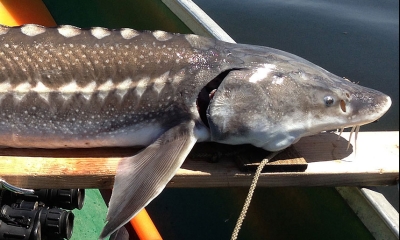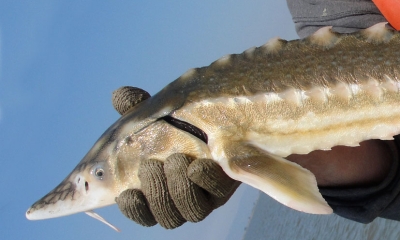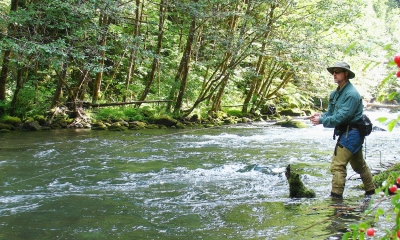
Sturgeon
Sturgeon appeared in the fossil record 200-million years ago and have survived to today little changed. Both green and the larger white sturgeon are found in Oregon waters. Some of these fish can live to be 100-years-old, but they spawn only once every 2- to 8-years.

Types of Sturgeon

Green sturgeon
Features: Green sturgeon have olive to dark green backs and a yellowish, green-white belly. They also have a green strip down the middle of their stomachs. This fish will grow to 7-feet long and, as with white sturgeon, have bony body armor along their backs and are covered in sandpaper-like skin.
Habitat: Green sturgeon are bottom dwellers, travelling all along the Pacific coast of North America. They spawn in deep pools in turbulent freshwater from March to July.
Technique: Green Sturgeon may not be targeted for retention or catch-and-release angling. Any Green Sturgeon caught incidentally, for instance during White Sturgeon fishing, must be released immediately and unharmed.

White sturgeon
Features: There's no mistaking a sturgeon. This primitive looking fish has large bony plates running down its back, a long flat snout, and a deeply-forked tail. It's also covered in rough, scale-less skin, similar to a shark. Though they can reach lengths of 20 feet, most white sturgeon rarely get over 10-feet long, which seems plenty long to us. Some populations migrate between the ocean and freshwater, but not necessarily with the same consistency as salmon or steelhead. These prehistoric fish may live well over 100 years, and may not mature until they are 25-years-old.
Habitat: White sturgeon are primarily found in large freshwater streams and estuaries along the Pacific coast, but will occasionally undertake extensive ocean travels inside the 50-fathom line.
Technique: Sturgeon are bottom feeders and have four barbels near their snouts. They use these to feel and smell food, so putting some stinky bait on the bottom is the way to go when you're sturgeon fishing. The largest sturgeon populations are in the Columbia and Willamette rivers, but anglers can find them in bays and estuaries along the coast as well.

